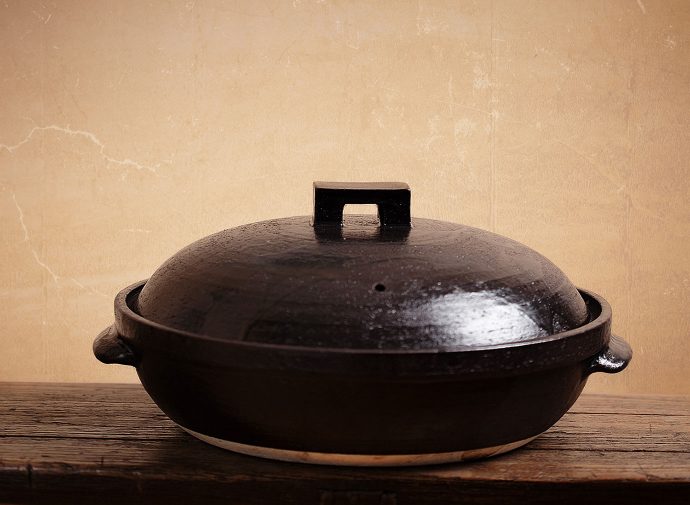Nimono, the Japanese method of simmering an ingredient in a flavored liquid, is a technique that goes well with the variable weather of spring, since it is used primarily with young and tender ingredients at their prime. An encyclopedia of Japanese gastronomy lists fifteen different categories, along with their subdivisions, for this technique. The variations are based on different ways of flavoring the simmering liquid.
This is one of my favorite methods for cooking oily-fleshed fish such as salmon, mackerel or sable. I use the “staggered boil” technique, in which each ingredient is added to the pot after the liquid has returned to a simmer. The fish is delicious served hot or cold. I frequently serve the warm fish as a simple supper with rice and salad the night it’s prepared, and serve it again, cold, for a lunch entrée the next day. I love the silky, creamy texture of the flesh paired with a crisp julienne of daikon or other radishes, garnished with red-pickled ginger.
The recipe for simmered mackerel is adapted from Shizuo Tsuji’s cookbook Japanese Cooking: A Simple Art. He uses a heavy-bottomed saucepan to simmer the fish, covered with an otoshi-buta or drop-lid. The lid fits inside the pan, resting directly on top of the simmering liquid. The drop-lid keeps the ingredients submerged in the liquid and has just enough weight to stop them from moving around and breaking up as they cook. A drop lid is an inexpensive and incredibly handy tool. The traditional wooden otoshi-buta can be hard to find, so alternatively, use a silicone “pig” drop-lid. The steam can escape from the nose of the silicone pig cover, which also makes it a useful tool when reheating things like rice in the microwave. In a pinch, you can always make a drop-lid out of parchment paper.
![]()

